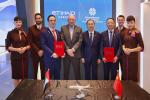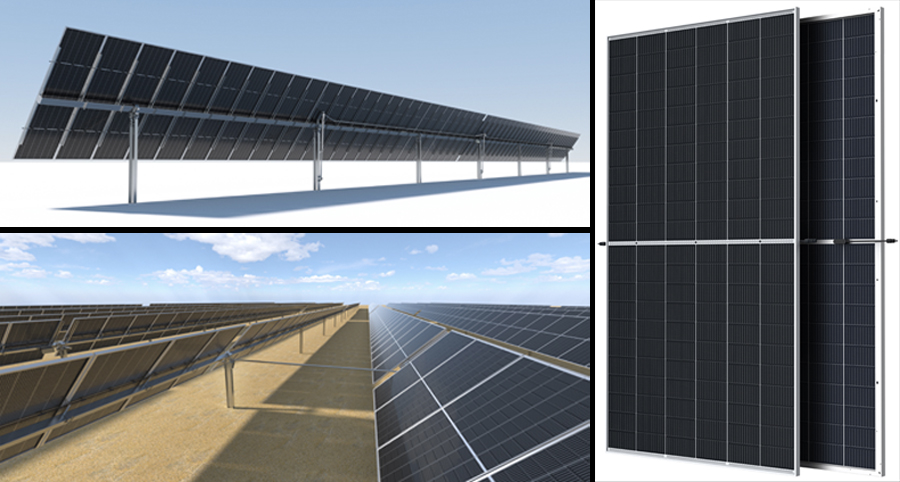Trina Solar sees that the 670W Vertex module will be popular for large-scale power plants in Sri Lanka, especially low-cost power plants which are very sensitive to investment costs.
“The launch of 670W+ Vertex module in Sri Lanka is very much in line with the nation’s target of being carbon neutral and transitioning completely to renewable energy by 2050,” says Trina Solar South Asia director Gaurav Mathur.
Vertex modules achieve higher power density and efficiency by incorporating larger solar cells, 210mm in diameter, which means there are fewer solar cells needed for each panel.
Older generation modules use solar cells that are smaller and require more cells to achieve higher power.
“The use of 210mm diameter solar cells is the new global industry standard,” says Mathur.
Vertex also achieves greater power density and efficiency by incorporating other leading technologies, such as: multi-busbar technology; to maximize light capture; high density encapsulation technology, to minimize the space between each cell; and cells that are split using non-destructive cutting technology.
Non-destructive cutting is done at very lower temperature, resulting in a smooth cut.
The new era of 600W+ solar modules - such as the 670W+ Vertex solar modules - means equipment, procurement, and construction companies (EPCs) as well as commercial and industrial (C&I) customers can achieve the total power output required using fewer solar modules thus maximizing power output from the land available.
Using fewer modules to meet a projects’ requirement of the total power output contributes to lower levelized cost of energy (LCOE).
LCOE is calculated by dividing total project cost by total power output.
The new Vertex modules also deliver lower balance of system (BOS) cost, because of less cabling required as well as fewer mounting systems, combiner boxes, etc.
Having fewer solar cells for each module reduces the voltage.
It means for Trina Solar Vertex modules you can have more modules per string, delivering additional BOS savings.
Today’s launch of the 670W+ Vertex module in Sri Lanka coincides with a webinar (April 28) organized by Trina Solar and its local partners to discuss the Vertex technology and trends in Sri Lanka’s renewable energy market.
“Development of Sri Lanka’s solar industry creates highly-skilled jobs and is in line with national development objectives as it creates investment opportunities,” says Mathur.
“Solar energy is the right fit for Sri Lanka because it is proven technology that can be quickly and readily deployed to help the nation achieve its commitments under the Paris Agreement and be carbon neutral by 2050.”
“There is a need to quickly ramp up deployment of solar energy so Sri Lanka can achieve its goals.”
The Asia Development Bank (ADB) has forecast that Sri Lanka’s demand for electricity generation is likely to increase five-fold to 70,000GWh by 2050 from 14,000GWh in 2016.
It says Sri Lanka has potential to deploy 16GW of solar power.
But the current installed capacity remains low.
The International Renewable Energy Agency, in its Renewable Energy Statistics Report released in March, shows solar energy capacity in Sri Lanka increased 7% year-on-year in 2020 to 230MW capacity from 215MW capacity.
Mathur says: “Sri Lanka today still relies largely on imported coal and petroleum for its electricity generation needs.”
Replacing imported fossil fuels, with solar energy for electricity generation, meets national objectives, namely: energy security and economic security.
“Solar energy allows Sri Lanka to be self-sufficient and less affected by fluctuations and volatility in oil, gas and coal prices,” says Mathur.
Solar energy is also more practical than gas and coal-fired power stations.
“Replacing coal, gas and petroleum-fired power stations with solar energy will lead to a reduction in air pollution: less particle matter in the air and less sulphur dioxide and nitrogen oxide which are produced when fossil fuel is burnt.
“Another benefit with solar farms is there will be less need to develop so many high-voltage transmission lines.
Electricity is lost when it travels through transmission lines and the losses increase with longer transmission lines,” adds Mathur.
The launch of the 670W+ Vertex module in Sri Lanka coincides with the launch in Sri Lanka of TrinaTracker.
“We have an advantage over our tracker competitors, because Trina Solar is a pioneer of the new, larger format bifacial modules,” says Mathur.
“Having early access to the new module technology meant TrinaTracker had a head-start on its tracker competitors when it came to wind-tunnel verification and performing the necessary due diligence to integrate smart trackers with the new, larger solar panels.”
“For example, we have optimized the trackers’ performance in terms of the longer string length possible with these modules.
We can fully accommodate these longer strings on longer and wider tracker structures and this means we can have up to 40 modules in a string, unlocking savings not only on the tracker cost on motors and piles but also savings on downstream electrical BOS costs with fewer string cables, combiner boxes, trenches and so on.”
Trina Solar is unique because it is the only solar module manufacturer that also makes trackers.
“We feel trackers will become very popular in Sri Lanka. Customers want to increase the energy output of their projects to achieve a lower LCOE.
The combination of trackers and bifacial PV typically deliver a 15-20% boost to yield and accordingly unlock a reduction of 5-8% for LCOE as compared to fixed-tilt,” says Mathur.
“Customers here have always been very price conscious.
They need to maximize their return on investment.
The way to achieve lower LCOE is to use high power, high efficiency bifacial modules and smart trackers.
Trina Solar makes both, so it is better able to optimize the performance for lower LCOE,” adds Mathur.
About Trina Solar
Trina Solar is a world leading and total solutions provider for solar energy.
Founded in 1997, Trina Solar develops proprietary smart PV solutions for large power stations as well as commercial and residential solutions, energy storage systems and photovoltaic modules.
As the world’s leading provider of integrated solar energy solutions, Trina Solar has also taken the lead in the world of energy IoT (internet of things).
It is committed to becoming a global leader in this new and emerging sector.
For more information, please visit www.trinasolar.com.























